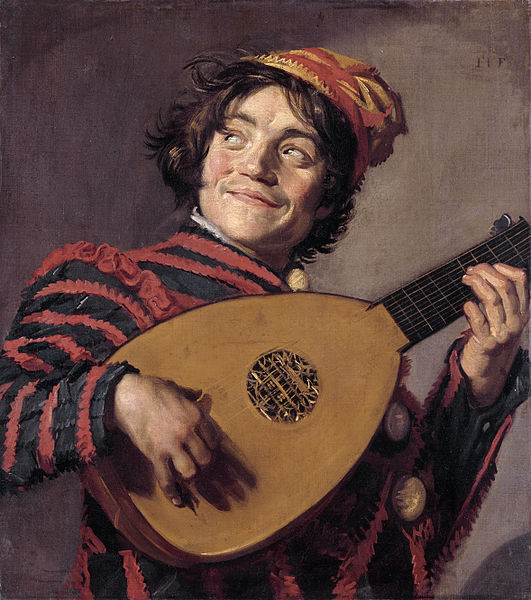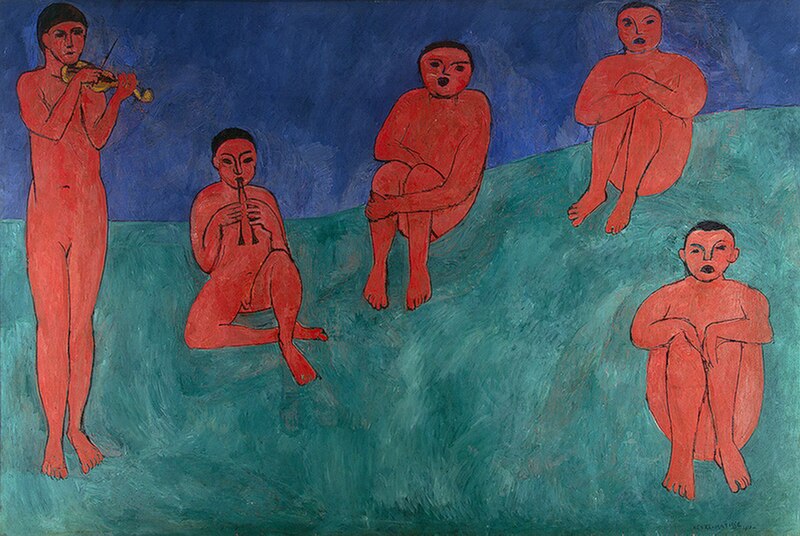Very rarely are Frans Hals’ people appeared
without cheerful countenances or unpretentious smirks. Happiness reigns Hals’
portraits of people of his time, the aristocracies and the peasants alike. It
therefore came not as a surprise if music should be served as an instrument for
the paintings’ permeation of felicity. The buffoon in the picture has himself
dressed to the festivity, gleefully plucking away the lute, glances sideward as
if to engage the attention of the apple of his eye, whom the music is dedicated
to. What makes his music tangibly and palpably felt is the tresses of his hair,
which scamper about joyfully in midair.
From centuries on painters have tried to materialize
the infectiousness of music among the listeners. Or the essence of music could
be rendered with ingenious exactitude, as seen in Jan van Eyck’s Ghent Altarpiece (1432), in which some
art historians alleged to identify the precise notes of the music solely
through close study of the angels’ humming mouth. In most cases, the aim is more
or less achieved when the painting succeeds in suggesting the elements or moods
of music. The music in our painting is not one for a raucous affair, but
appealing to a knot of selective listeners. This private pleasure, permissible
only to a few, is also manifested through Edouard Manet’s Spanish Singer (1860). Posing against a dark background, the
Spaniard plays solitarily to himself, with merely the enveloping darkness and
empty tankards for company. But the singer is not unheard. Thanks to Manet’s
dexterous treatment of light, which comes from four winds and fixates on the
singer, and makes him the lodestar of the stage. His figure is also enlivened
by the juxtaposition of complementary colours, and also his silhouette, looming
just beneath his tilted feet. Manet’s music is something more profound;
something that invites contemplation.
Back to our painting. For a long time I had
pondered the possibility that it was not sheer happiness that Hals was trying
to capture. On hindsight the smiles of his people almost seemed satirical, or
feigned, as if the sitters were ordered to pull on various comic expressions. What
contributed to my notion was also the often garish colours applied to the
features, which made the panoply of faces not always delightful sights to
behold. But Hals prevented any unpleasantness of his portraits by doing his colours
in visibly loose brushstrokes, as if the paintings were all following the
rhythms of some unknown melodies, and the painter, basked in the beautiful
symphony when completing his masterpieces.
Frans Hals’ people are like clowns, the
professional ones who are playing the roles exactly as they are assigned to be emulating.
Any attempt to scrutinize them psychologically is difficult, and almost
impossible. Hals’ people are impervious to any apparent emotions, and always
smiling their masks are untearable. But the mood and feeling is in the
atmosphere, as in Buffoon Playing a Lute
(1623-4), the sound of music is realized. Anyone unimaginative who is still
unable to conjure up the substance of music should eschew Matisse’s Music (1910), which makes the spirit of
music an even more abstract and ungraspable entity.




Comments
Post a Comment